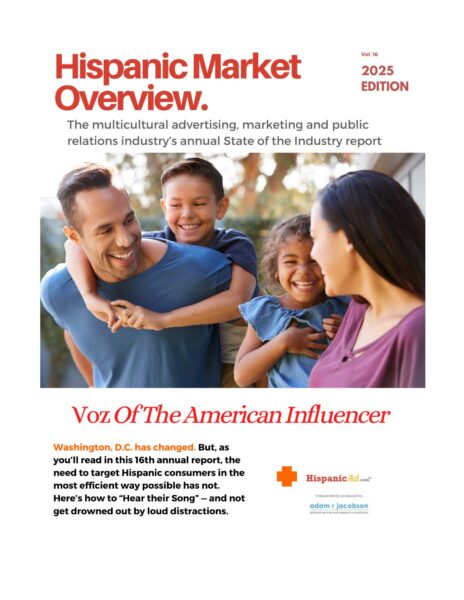Why Higher Ed CMOs Burn Out Fast
November 12, 2025
 By Jamie Ceman, Ed.D. – Two-time AMA Higher Ed Marketer of the Year | Ed.D in Change Management and Leadership
By Jamie Ceman, Ed.D. – Two-time AMA Higher Ed Marketer of the Year | Ed.D in Change Management and Leadership
The chief marketing officer has become higher education’s newest indispensable hire. Presidents and boards increasingly expect their CMOs to fix declining enrollment, rebuild reputation, and even stabilize shaky fundraising pipelines while budgets shrink. As The Conversation recently reported, institutions are hiring more CMOs than ever because marketing is no longer viewed as optional. It is mission critical.
Yet the paradox is clear. While universities expand their reliance on CMOs, those same leaders are cycling through jobs at an alarming pace. Their average tenure is now measured in months, not decades. Over half of higher education CMOs have been in their current role for three years or less, and a third are in their first year on the job, according to the 2023–24 CMO Study. For presidents hoping their new marketing hire will bring stability and transformation, this revolving door is more than a nuisance. It is a threat to institutional resilience.
So why are CMOs leaving so quickly, and what does that say about how higher education understands marketing leadership?
The Expectation and Experience Gap
Every new CMO is greeted with a wish list that could rival a university’s strategic plan. Increase enrollment. Differentiate the brand. Build alumni affinity. Manage a crisis or two (daily). Tell our story. Do all of this with a fraction of the resources given to peers in the corporate sector.
The problem is not that CMOs lack the skills or drive. It is that their roles are often ambiguously defined, poorly resourced, and politically constrained. As industry analysts have noted, presidents often hire a CMO without first deciding what kind of CMO they actually need. Is the position primarily about communications, enrollment, reputation, or advancement? Too often the answer is all of the above, with none of the structural authority to execute across those domains.
The result is predictable. Leaders arrive with ambitious visions but quickly discover that they lack the budget, team, or seat at the cabinet table to make them real. Some CMOs discover they report not to the president but to a mid-level vice president, cutting them out of strategic conversations altogether. Others find themselves scapegoated for enrollment dips that were years in the making. Burnout follows, and with it another short tenure.
The Numbers Tell the Story
In corporate America, CMOs already have the shortest C-suite lifespan, averaging just over four years according to Spencer Stuart’s CMO Tenure Study. But higher education CMOs often do not even make it that long. Their three-year median rivals the notoriously brief tenure of provosts, according to CUPA-HR’s analysis of higher ed leadership.
Surveys show that more than half of senior marketing leaders are considering job moves, with a third open to leaving higher education entirely, according to SimpsonScarborough’s Job Satisfaction and Efficiency study. That exodus is not theoretical. It has already led to the rise of interim and even fractional CMOs as institutions scramble to fill gaps.
The revolving door in CMO offices is not just a personnel issue. It is a strategic liability. Marketing is the connective tissue across enrollment, reputation, advancement, and student success. Every time a CMO leaves, institutions lose momentum, reset strategies, and disrupt teams that are already fragile.
When leadership churn is high, marketing maturity stalls. Teams remain stuck in transactional or progressing stages, where efforts are reactive, siloed, and poorly measured. They never reach the accelerating or high-performance levels where data-driven insights fuel continuous improvement and marketing becomes an institutional growth engine. Instead, new CMOs inherit fragmented infrastructures, burned-out staff, and a culture skeptical of centralized branding.
For universities battling enrollment cliffs and political scrutiny, this cycle is unsustainable. A campus cannot rebuild reputation or reverse demographic decline if it cannot hold on to the very leaders charged with doing so.
A Story of Ownership and Perception
A friend of mine who recently left a CMO role at a university told me a story that summed up the issue of ownership in a single edit. As he was preparing to depart, he wrote his own campus announcement. In the sentence addressing the impact his work had on enrollment, he wrote that under his leadership, his team had “helped drive record applications.” The president changed one word before sending the announcement out to the campus community. Instead of “drive,” the message read that he had “helped support record applications.” That one change captured the president’s view of his role. Marketing could support, but never drive, growth.
That subtle word choice reflects a much larger problem. When CMOs are viewed as support staff rather than strategic leaders, they are denied ownership of the very outcomes they are hired to influence. It is hard to retain leaders who are asked to deliver transformation but told they cannot claim credit for results.
What Needs to Change
If presidents and boards are serious about retaining CMOs long enough to see impact, a few commitments are non-negotiable:
- Clarify the role. Decide what kind of CMO the institution truly needs. Not every CMO can be all things at once.
- Elevate the seat. Ensure the CMO reports directly to the president and sits on the cabinet.
- Anything less signals that marketing is tactical service, not strategic driver.
- Resource realistically. Align budgets and staffing with expectations. Asking a lean team to deliver national scale outcomes only fuels burnout and turnover.
- Measure strategically. Build shared dashboards, consistent analytics, and clear KPIs tied to institutional goals. This strengthens accountability and moves teams toward consistent performance.
- Invest in culture. Foster an organizational culture where marketing is not the brochure department but a partner in advancing mission. This requires training across campus, recognition of contributions, and visible presidential support.
A Final Word
When I first became a CMO, I believed that strong strategy alone would guarantee success. What I learned quickly was that strategy without structure, authority, and resources is just a PowerPoint deck. The institutions that thrive are those that treat marketing as the strategic lever it truly is, and that support their CMOs as partners rather than expendable problem solvers.
The hiring surge in CMO positions tells us that universities recognize marketing’s centrality. The churn tells us they still have not figured out how to sustain it. Until higher education reconciles the expectations placed on CMOs with the lived realities of the role, the revolving door will keep spinning, and institutions will keep paying the price in lost momentum, wasted searches, and stalled transformation.



























